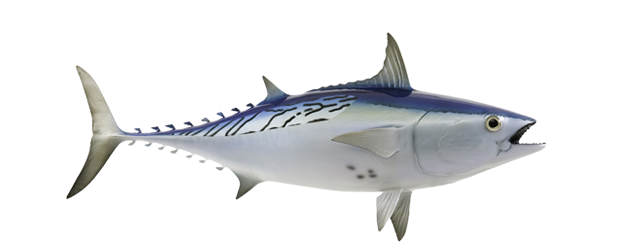Bonito, Little Tunny

View Regulations

Scientific Name
Euthynnus alletteratus


Common Names
Blue bonito, False albacore, Little Tuna


Description
The Little Tunny is a common tuna that is defined by its distinctive coloration of dark spots, curved line like patterns on its back. The Little Tunny ranges in coloration from a grey green to a bluish color on its back, blending to a silvery white on its belly. In addition to this it also lacks scales in most places save for a line running down the middle of the fish.


Habitat & Behaviour
Little Tunnies can be found in coastal features such as bays, reefs as well as further out from the shore. They are a migratory schooling fish and can be found traveling in large, sometimes even huge schools traveling north for the summer and south in the winter.


Natural Prey
Little Tunnies are speedy, voracious predators that subsist on a diet of small fish, cephalopods and crustaceans.


Handling Tips
Grab by tail when get close to boat, gaff larger ones in back of head if harvesting. Rows of teeth - don’t put finger in mouth (teeth not especially sharp but still wouldn’t be good to get bitten!). Can put fingers in gill plates to hold on to em.

- Lucky Tackle Box
- Billfish Bounty in the Heart of the Mayan World – Guatemala
- The Best Species of Shark to Catch
- How to Catch a Shark: what equipment do you need?
- The Best Winter Fishing Spots in Texas






